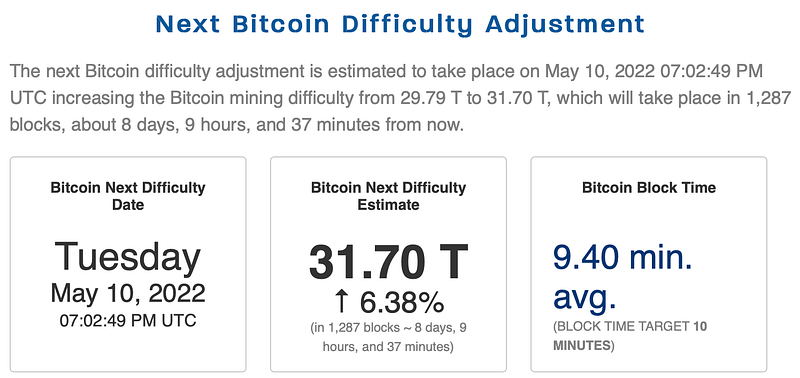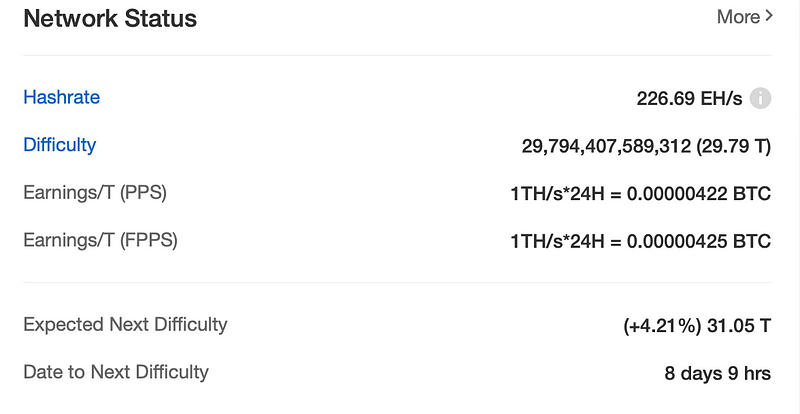
Bitcoin’s hash rate refers to the amount of computing and process power being contributed to the network through mining. Mining is a process that keeps the digital currency’s network maintained. This happens via a global network of mining machines that mine bitcoins by solving complex mathematical computations to verify Bitcoin transactions.
“Hashing” a block is the process of ensuring the validity of the network transactions. As a reward for hashing, miners receive bitcoins. To solve these problems, each machine has to make millions of guesses per second. This requires a lot of electricity (around 0.6% of the world’s total), according to The University of Cambridge’s Bitcoin electricity consumption index .
It’s a complex process, but the important thing to know is that the Bitcoin network is designed to make sure that a consistent number of Bitcoins are released into the market over time. To keep this consistent, bitcoin mining becomes more difficult over time.
The Bitcoin hash rate is a measurement of how many times the Bitcoin network attempts to complete those calculations each and every second. It is expressed as hashes per second (h/s). It’s the approximate average of all the hash rates of each individual miner in the network. A higher hash rate is better, because it increases the miner’s chances of finding the next block and receiving a Bitcoin reward.
Today (May 2) the processing power that confirms transactions and secures the Bitcoin network has reached an all-time high. At the press time the hash-rate touched 272.79 EH/s, which is approximately 272,790,000,000,000,000,000 hashes per second (H/s). Bitcoin’s hash-power has never been higher than this point in history. The processing power backing the Bitcoin network reached an ATH for the last time on April 23 — less than 10 days ago!
The Bitcoin hash rate is generally considered to be a health signifier for the network — a high hash rate means high processing power is present within the network, which also creates greater security. A good hash rate might indicate that miners are investing money into newer, more powerful mining equipment, which in turn might mean they have confidence in the network. While statistics show that bitcoin’s price has not had the best results in first quarter of 2022, the hash-rate increasing by more than 55% since then is quite a positive sign.
Following a downward difficulty adjustment algorithm (DAA), the network is expected to see a DAA increase in eight days. Because the hash-rate is running at such high speeds, the DAA is expected to increase by 6.38% or 4.21% according to different sources. It already increased by 5.56% on April 27.


